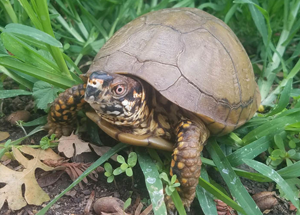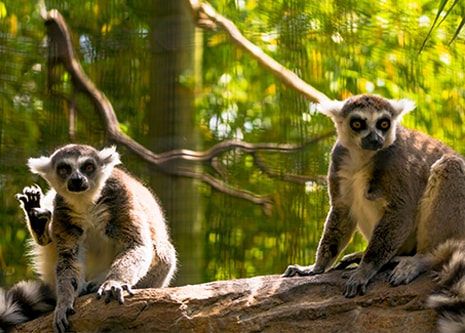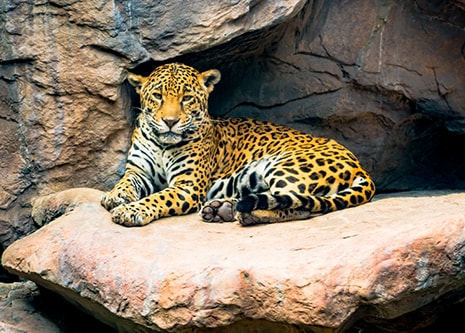
- VisitSupport Happy HollowDONATE TODAYExploreSupport Happy HollowDONATE TODAYLearnSupport Happy HollowDONATE TODAYSupport
-
Today's Hours: 10:00 am to 5:00 pm
Education AmbassadorsThree-toed box turtle

Scientific name: Terrapene carolina triunguis
Family: Emydidae
Order: Testudines
Class: Reptilia
Range: Eastern United States
Habitat: Subtropical and temperate forest, shrubland, wetland
Lifespan: Approximately 40 years; over 80 years has been recordedWhat do they look like?
There are four subspecies of box turtles found in the United States as well as two found in Mexico. The subspecies vary in appearance, though they all share common characteristics. Box turtles have domed carapaces (top shell) and hinged plastrons (bottom shell). This specialized plastron allows them to enclose their soft, vulnerable body inside their shell, protecting them from predators. Box turtles do not have flippers for swimming; rather, they have feet equipped with claws for walking through wetlands and forests. Turtles do not have teeth, but they do have a sharp beak which can cut through vegetation and small invertebrates. All tortoises are turtles, but not all turtles are tortoises. “Turtle” is the general name given to all testudines, including turtles, tortoises, and terrapins. Commonly what we refer to as turtles live in or near water while tortoises live exclusively on land.How do they behave?
Unlike most turtles, box turtles spend little time in the water. They are mainly land dwellers, visiting water only to drink or soak. Box turtles keep small territories which they seldom venture out of. Box turtle territories often overlap, though aggression towards one another has rarely been seen.What do they eat?
Box turtles are omnivores (they eat both plants and meat). While growing, young box turtles show more carnivorous (meat eating) tendencies, preying upon mostly insects, snails, worms, and small vertebrates. Adults tend to prefer more vegetation and fungi. Diets vary upon seasonal availability and individual preference. At Happy Hollow, they are fed fruits, greens, vegetables, and mealworms.How are they born?
Mating season occurs in spring through fall. Female box turtles have flat plastrons while males’ plastrons are slightly concave to allow mounting during mating. Three to eight leathery eggs are laid in a nest dug by the female and are then covered up to incubate on their own. Females can lay several clutches each year and can lay fertile eggs up to four years after breeding. The eggs will incubate for up to three months before hatching.Conservation
The conservation status of the three-toed box turtle has not been evaluated by the International Union for Conservation of Nature. Box turtles are commonly kept as pets within the United States. As these animals grow, their housing and husbandry needs become more challenging. Because of this, some people release their unwanted box turtles into the wild. Box turtles often don’t survive in these new habitats and can do damage to the overall ecosystem. In California it is illegal to release captive turtles into any waterway. If you or a friend have a pet box turtle that needs to be relocated, contact your local animal shelter or reptile rescue group. For more information on reptile rescue in the Bay Area check out the Bay Area Amphibian and Reptile Society at www.baars.org
Zoo on the Hill
Located across from the Keep-Around Carousel is the Zoo on the Hill. Learn about wildlife up close during daily meet-and-greets, leap like a lemur on the playground, brush and feed the goats,, or take a peek inside Doc’s Critter Care building and the Ranch House. Double-H Ranch features a combination of animal exhibits, including giant anteaters and red ruffed lemurs, as well chickens and domesticated animals that are docile enough to touch.
See Animals
Zoo in the Hollow
Follow the crooked bamboo pathway down into the hollow and visit with some of the most amazing animals in the world. Where else in San José can you get up close to a stunning jaguar, lemur, meerkat or American alligator? Happy Hollow is dedicated to helping save species and preserve wildlife for future generations by participating in Species Survival Plan programs through the Association of Zoos and Aquariums.
See AnimalsVisit Us Today
Plan an unforgettable experience at San Jose’s family-friendly park and zoo.
more info